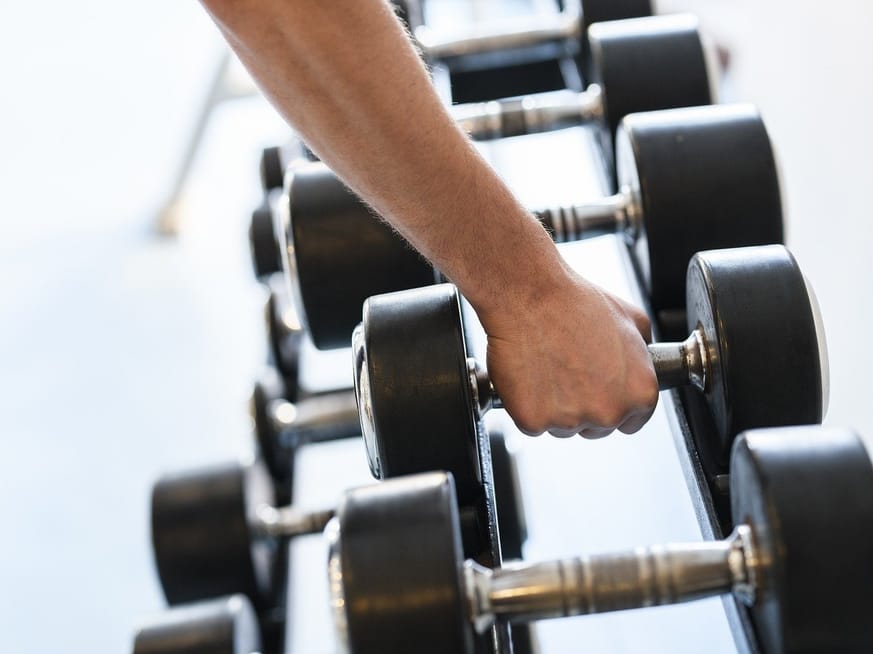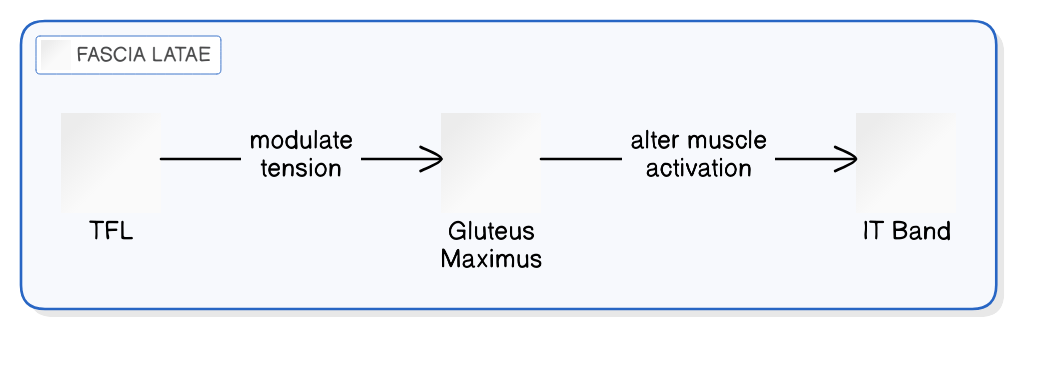Summary
This article delves into the significance of the fasciae latae muscle, exploring its multifaceted roles in our movement and well-being. Understanding these aspects can greatly enhance our fitness routines and injury prevention strategies. Key Points:
- Fascia latae plays a crucial role in proprioception and neuromuscular control, enhancing movement efficiency and preventing injuries—something I`ve personally experienced when focusing on this area during workouts.
- Its dynamic viscosity adapts to loading, affecting force transmission and energy dissipation; understanding this can optimize your performance—like when I noticed improved agility after targeted training.
- The interconnectedness of fascia latae with the deep fascial network highlights the importance of a holistic approach to musculoskeletal health, which has transformed my own recovery methods.
What is the Fasciae Latae Muscle and Why Should You Care?
My First Encounter with Iliotibial Band Syndrome: A Runner`s Tale of Frustration
But with every step during my usual 5-mile route, the pain escalated from a dull ache to a sharp reminder that something was off. So much for hitting my target time! After only 3 miles, I cut the run short, frustrated and anxious about what this could mean for race day.
That night, I shot a text to Jake—“Knee pain is back.” His response? “Dude, take it easy! Have you tried stretching?” Stretching… right. As if that would magically fix anything now. The discomfort didn’t even let me rest; I tossed and turned, mentally calculating the days left until race day—only 10!
I couldn’t help but think: how did it come to this? Running had always been my escape, yet here I was grappling with doubt over whether I'd even be ready at the start line.
| Aspect | Description | Importance | Training Tips |
|---|---|---|---|
| Location | Proximal anterolateral thigh, between superficial and deep layers. | Essential for understanding muscle anatomy and its role in lower body movements. | Incorporate stretching to improve flexibility in this area. |
| Origin | Anterior iliac crest on the outside of the hip. | Critical for proper hip function and stability during various activities. | Focus on strengthening exercises such as side leg raises. |
| Functions | Aids in stabilizing the hip joint and maintaining posture during standing, walking, and running. | Key player in dynamic movements, preventing injuries by supporting hip mechanics. | Utilize balance exercises like single-leg stands to enhance TFL activation. |
| Relationship with ITB | The iliotibial band (ITB) is formed from fascia surrounding nearby muscles and runs along the lateral side of the leg. | Provides structural support and helps distribute forces during movement. | Engage in foam rolling techniques to alleviate tension along the ITB. |
| Role with Gluteus Maximus | Works synergistically with gluteus maximus to stabilize hips. | Supports overall lower body strength crucial for athletes and active individuals. | Combine TFL-focused workouts with glute strengthening routines for optimal performance. |
The Turning Point: Finding Relief from IT Band Pain
After a few days of battling the knee pain, it became evident that this wasn't just another runner's hiccup. The discomfort was radiating through my leg, and I noticed the concern in my friends' faces during our group runs. “You sure you should be running like that?” Mark asked, his brow furrowed as he watched me limp slightly after finishing a lap. There was an awkward silence; we all felt it—this wasn’t what we signed up for.
By Wednesday afternoon, I found myself sitting in a physical therapist's office. As she assessed my form, her expression shifted from neutral to serious. “Your glutes and hips are weak,” she stated bluntly, her tone leaving no room for denial. It hit me harder than any run had—my pain was affecting not just me but everyone around me.
That evening at dinner with my family, they exchanged worried glances each time I winced while standing up or shifting in my seat. “Maybe it’s time to take a break?” my sister suggested hesitantly. We all knew something had to change—I could feel the worry hang thick in the air as forks clinked against plates without much conversation to fill the void.
It took some courage to admit that I needed help—help beyond what stretching alone could provide—but deep down, we all sensed it: this battle against IT band pain was about more than just one person’s race day dreams.
Understanding the Role of the Fasciae Latae Muscle in Athletic Performance

 Free Images
Free ImagesFrequently Asked Questions about the Fasciae Latae Muscle and IT Band Syndrome
Another question I hear frequently is, "How can I strengthen my Fasciae Latae muscle?" It's actually simpler than you might think! Incorporating exercises that target your glutes and hip abductors can make a significant difference. Many individuals overlook these vital muscles in their workout routines. Trust me; I've been there too! A few targeted squats or side leg lifts can really help build strength and support your hips better.
And let's not forget about maintenance! People often ask about the best ways to prevent injuries related to the IT band. One effective method is foam rolling—it's a game-changer! 💡 Small tip: Try rolling out your outer thighs before and after workouts to keep things loose and flexible. Stretching should also be part of your routine; it helps maintain elasticity in both the Fasciae Latae and the IT band.
By understanding these aspects of your body better, you'll not only reduce the risk of injury but also enhance your overall athletic performance! So next time you're planning a workout, consider giving some extra attention to your hips—they'll thank you for it!
Beyond the IT Band: Exploring the Fasciae Latae`s Broader Function in the Body?
Is Stretching Enough? Debunking Myths about Fasciae Latae Muscle Training
Practical Exercises to Strengthen and Stretch Your Fasciae Latae Muscle
Understanding the importance of the fasciae latae muscle is essential for anyone looking to enhance their hip stability and overall movement. The fasciae latae plays a pivotal role in daily activities such as walking, running, and even standing. I recommend incorporating specific exercises into your routine that target this muscle effectively; not only will you notice an improvement in your strength, but you'll also experience greater flexibility.
Many people overlook the significance of this muscle, often until they encounter discomfort or restrictions in their movements. I remember when I first started focusing on my fasciae latae – it transformed my workouts and reduced my risk of injuries significantly. Here’s how you can strengthen and stretch this crucial muscle through practical steps:
#### Step-by-Step Methodology
**Step 1: Lateral Band Walks**
- **Tools Needed:** Resistance band (medium resistance).
- **How to Do It:** Place a resistance band around your legs just above your knees. Stand with feet shoulder-width apart and lower into a slight squat position. Step sideways while keeping tension on the band.
- **Tip:** Aim for 10-15 steps to one side before switching directions (I like to play some upbeat music during this exercise; it keeps me motivated!).
**Step 2: Side Lunges**
- **Tools Needed:** None required, but weights can be added for extra challenge.
- **How to Do It:** Stand tall, take a big step outwards with one leg while bending that knee deeply (the other leg stays straight). Push back up to starting position.
- **Tip:** Focus on pushing through your heel as you return to standing.
**Step 3: Deep Side Lunges**
- **Tools Needed:** None needed.
- **How to Do It:** Similar setup as side lunges; however, go deeper into the lunge while keeping your chest up and back straight.
- **Tip:** Hold each lunge for about 3 seconds before returning - feel that stretch!
**Step 4: Standing Quad Stretch**
- **Tools Needed:** None necessary; wall support may help if balance is an issue.
- **How to Do It:** Stand on one foot while pulling the opposite foot towards your glutes using your hand—keep knees together.
- **Tip:** Try holding onto something stable if you're new at balancing.
**Step 5: Foam Rolling**
- **Tools Needed:** Foam roller or massage ball.
- **How to Use It:** Sit on the foam roller with one hip over it; roll gently from side-to-side along the outer thigh area where TFL resides.
- **Tip (Personal Habit):** Spend about 2 minutes rolling out each side – it feels incredible post-workout!
#### Advanced Techniques & Friendly Reminders
If you're looking for advanced applications or seeking further improvements, consider adding dynamic stretches before workouts, like leg swings or hip circles. These can warm up not just your fasciae latae but also prepare other muscles involved in stabilization.
Remember, consistency is vital! If you want optimal results from these exercises, aim for at least three sessions per week focused on both strengthening and stretching techniques. Also, listen closely to what your body tells you; if something doesn’t feel right—adjust accordingly!
Feel free to explore variations of these exercises as you progress—your journey toward stronger hips has just begun!

Can Targeted Fasciae Latae Training Prevent Injuries? A Look Ahead
Strengthening Your Fasciae Latae: A Summary and Next Steps
Consider adding side lunges, clamshells, and resisted leg raises into your routine. Resistance bands can be particularly beneficial as they provide varied tension throughout each movement pattern, ensuring proper muscle engagement. Additionally, don't overlook the value of foam rolling techniques; these can help alleviate tension not only within the fasciae latae but also in surrounding muscles.
Recognizing that fascia primarily consists of collagen fibers emphasizes its remarkable ability to adapt under stress. By implementing progressive overload in your training regimen—gradually increasing resistance or intensity—you'll not only fortify the muscle itself but also enhance its structural integrity over time. Always remember to prioritize proper form during exercises; this will not only maximize benefits but also help prevent injuries.
As you embark on strengthening this crucial area of your body, consider how these strategies align with current fitness trends emphasizing functional training and injury prevention. Now is the time to take action! Implement these training tips into your routine and notice how they transform your performance—are you ready to elevate your fitness journey?
Reference Articles
Tensor Fascia Lata
The tensor fasciae latae (TFL) is a muscle located in the proximal anterolateral thigh, situated between the superficial and deep ...
Understand Tensor fascia latae and IT Band
The tensor fascia latae and the iliotibial band are critical structures in the body for making it possible for us to stand, walk, and run.
Sequence Of IT Band And TFL Stretches For Athletes
The TFL or tensor fasciae latae is a small muscle on the outside of the hip. It originates at the anterior iliac crest and is ...
The Fascia Lata - Structure - Iliotibial Tract
The fascia lata is a deep fascial investment of the musculature of the thigh, and is analogous to a ...
Tensor fasciae latae muscle: Anatomy and function
Tensor fasciae latae is a fusiform muscle located in the lateral aspect of the thigh. It belongs to the muscles of the gluteal ...
Tensor fasciae latae muscle
The tensor fasciae latae is a muscle of the thigh. Together with the gluteus maximus, it acts on and is continuous with the ...
Iliotibial Tract
The iliotibial band (ITB) is a thick band of fascia formed proximally at the hip by the fascia of the gluteus maximus, gluteus medius ...
Tensor Fascia Lata / Iliotibial Band
- it thus acts as a supplement ligament across lateral aspect of joint - synergists: medius, minimus, & upper fibers of ...


 ALL
ALL Sports Data Science
Sports Data Science
Related Discussions